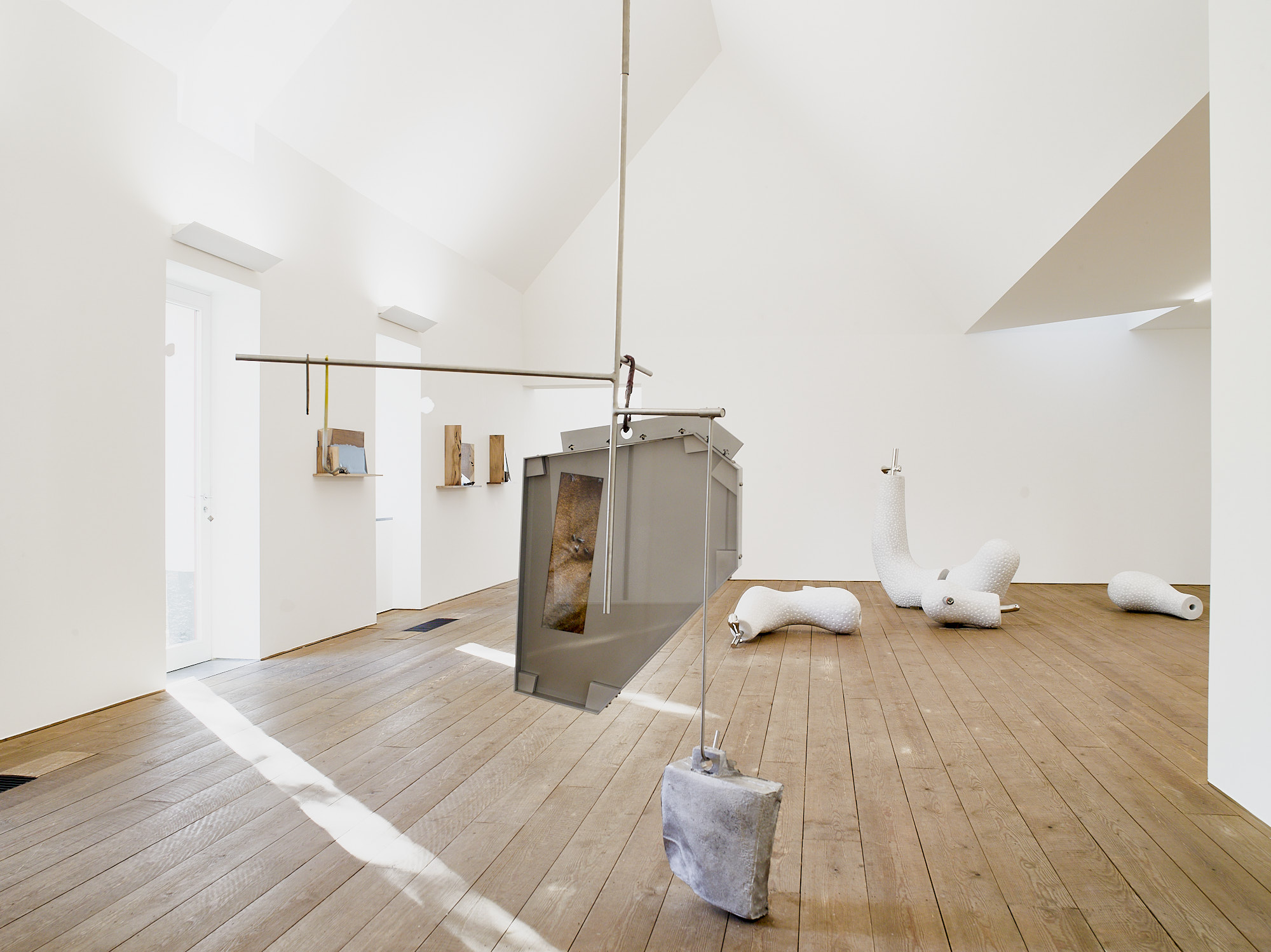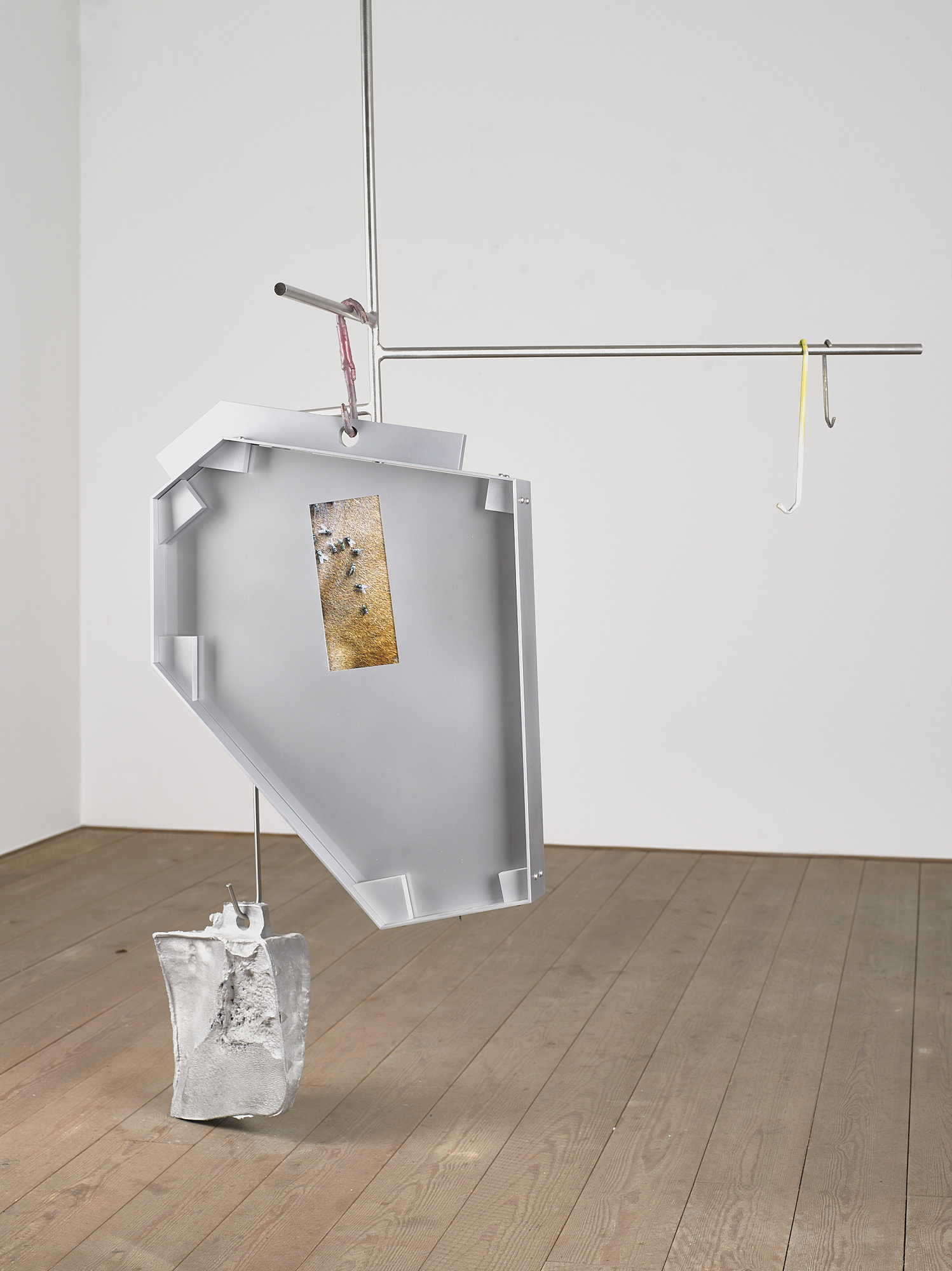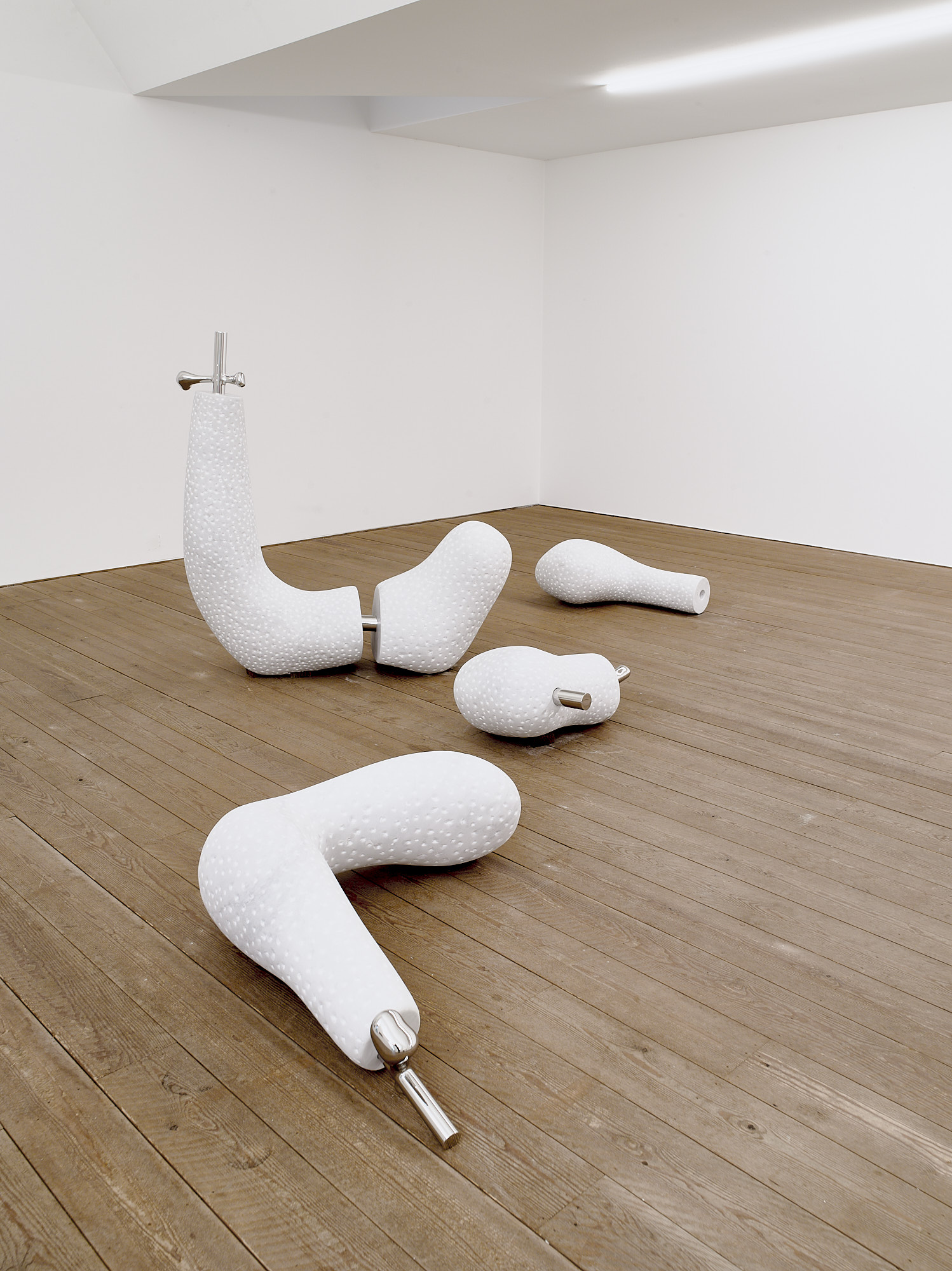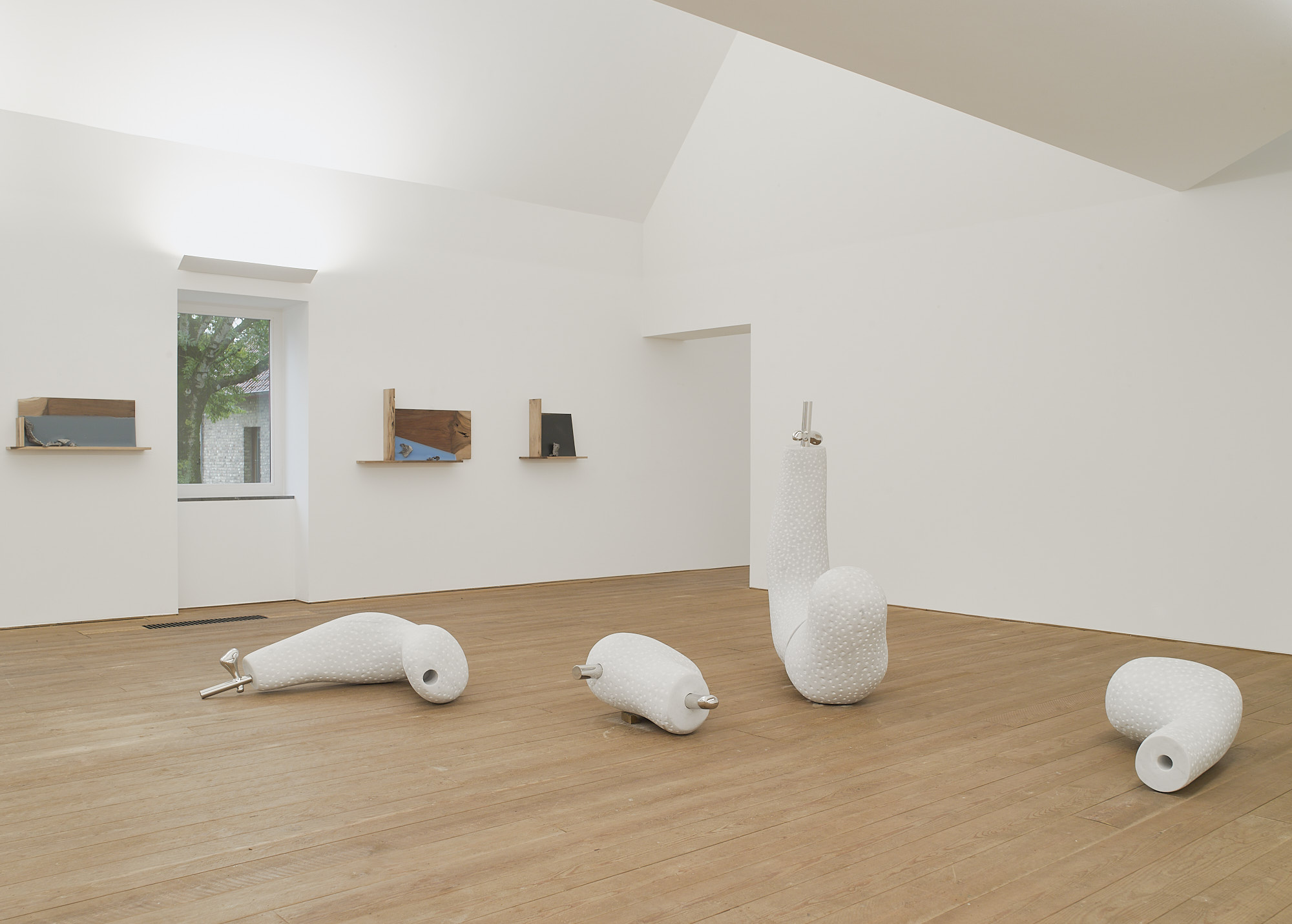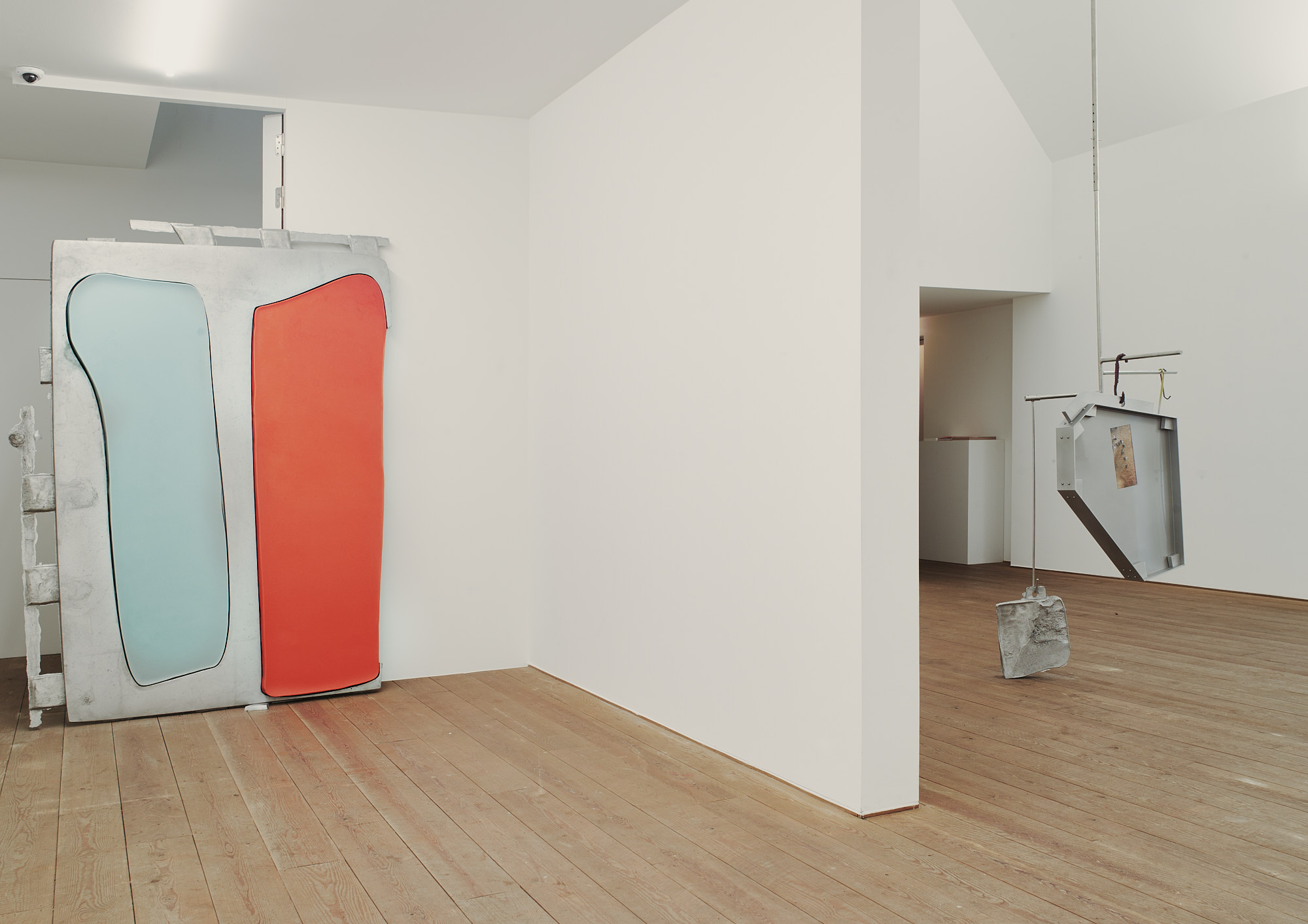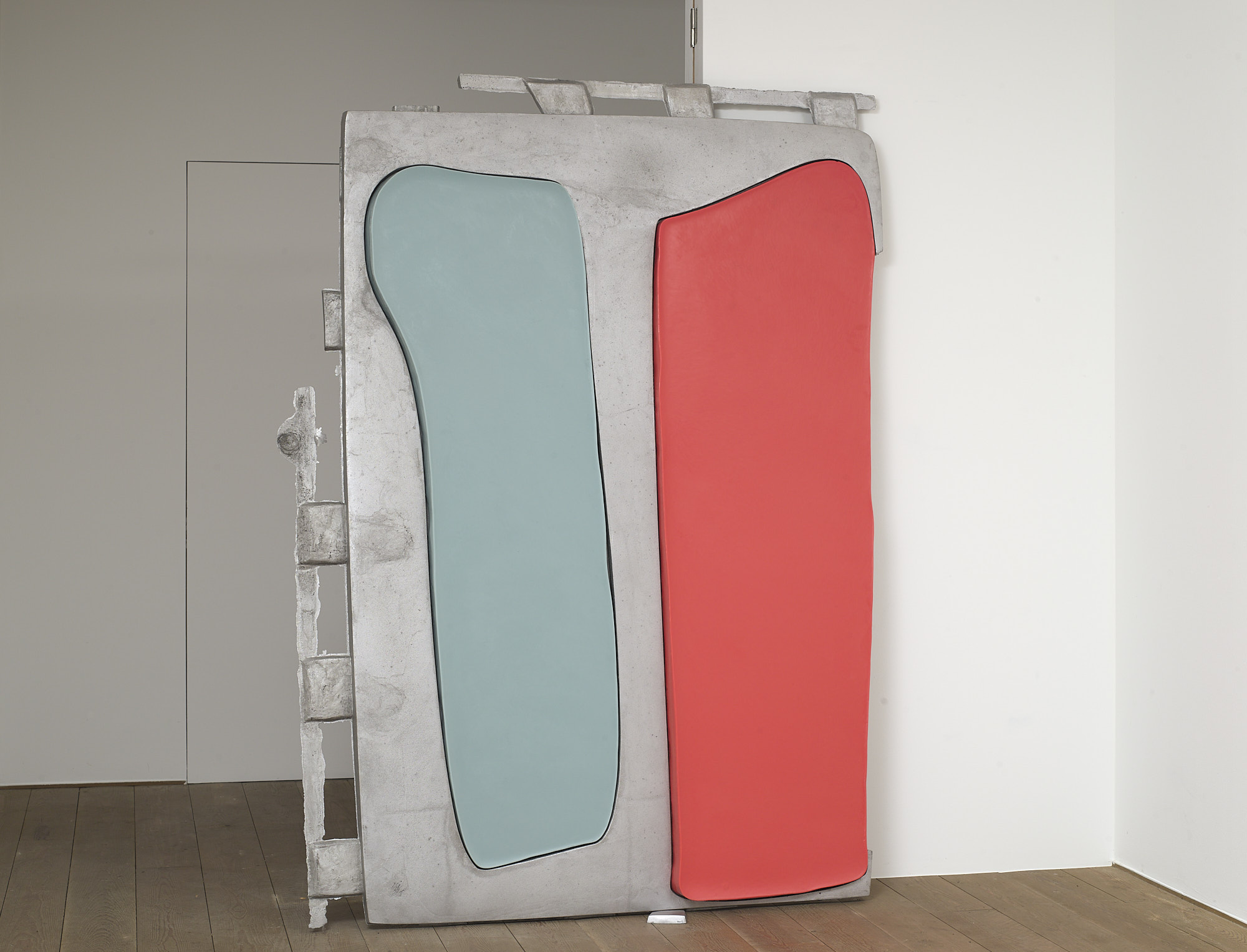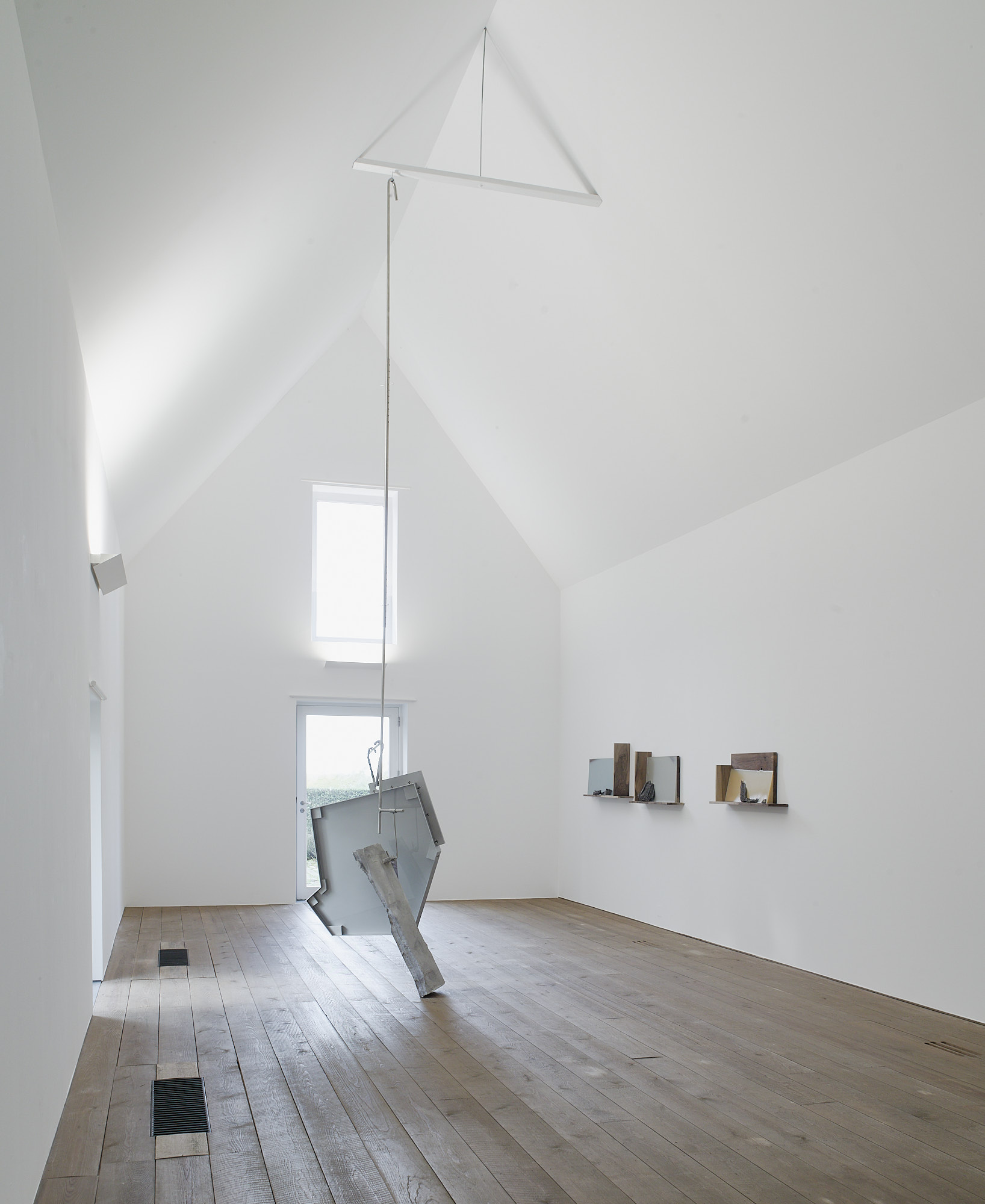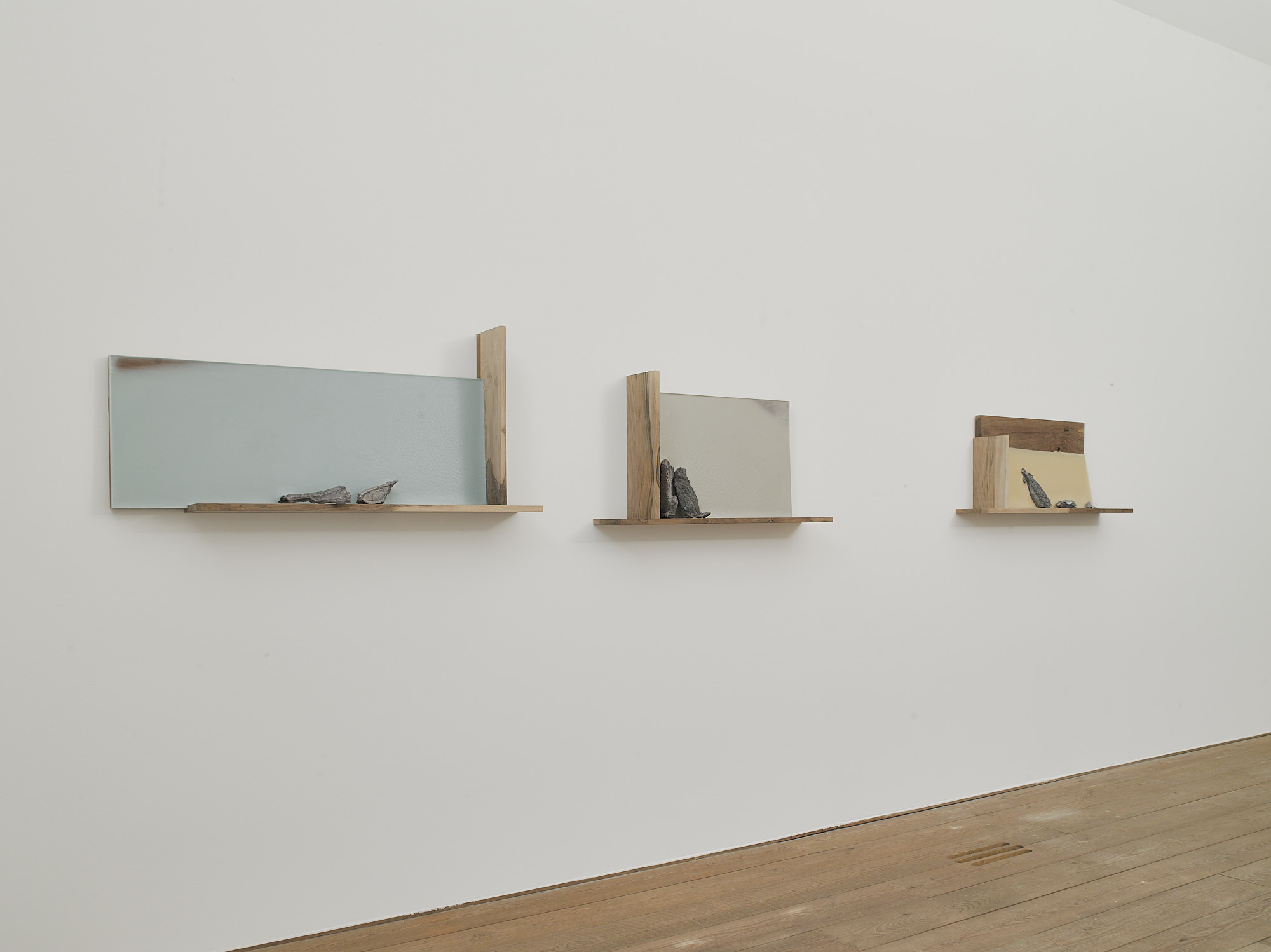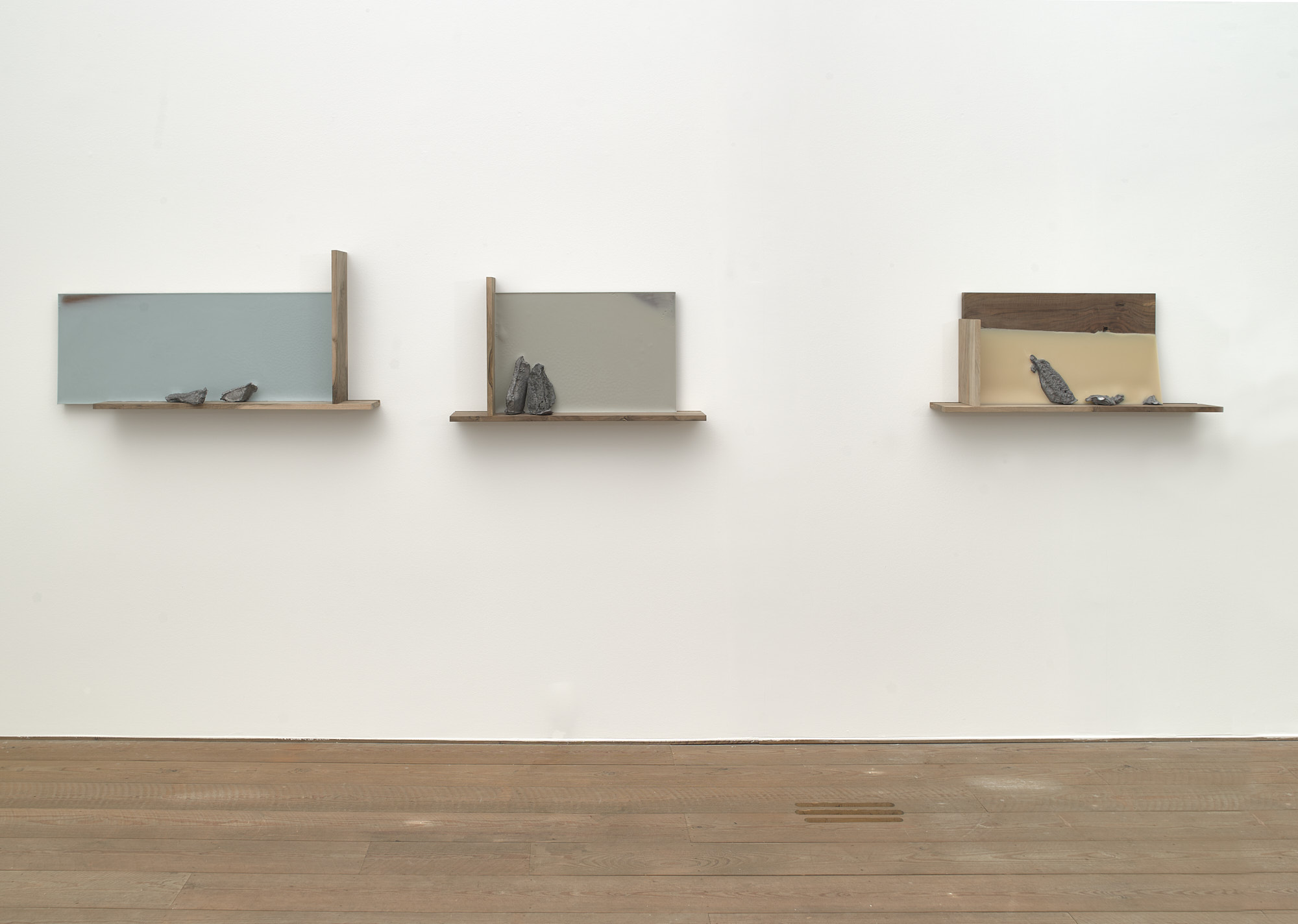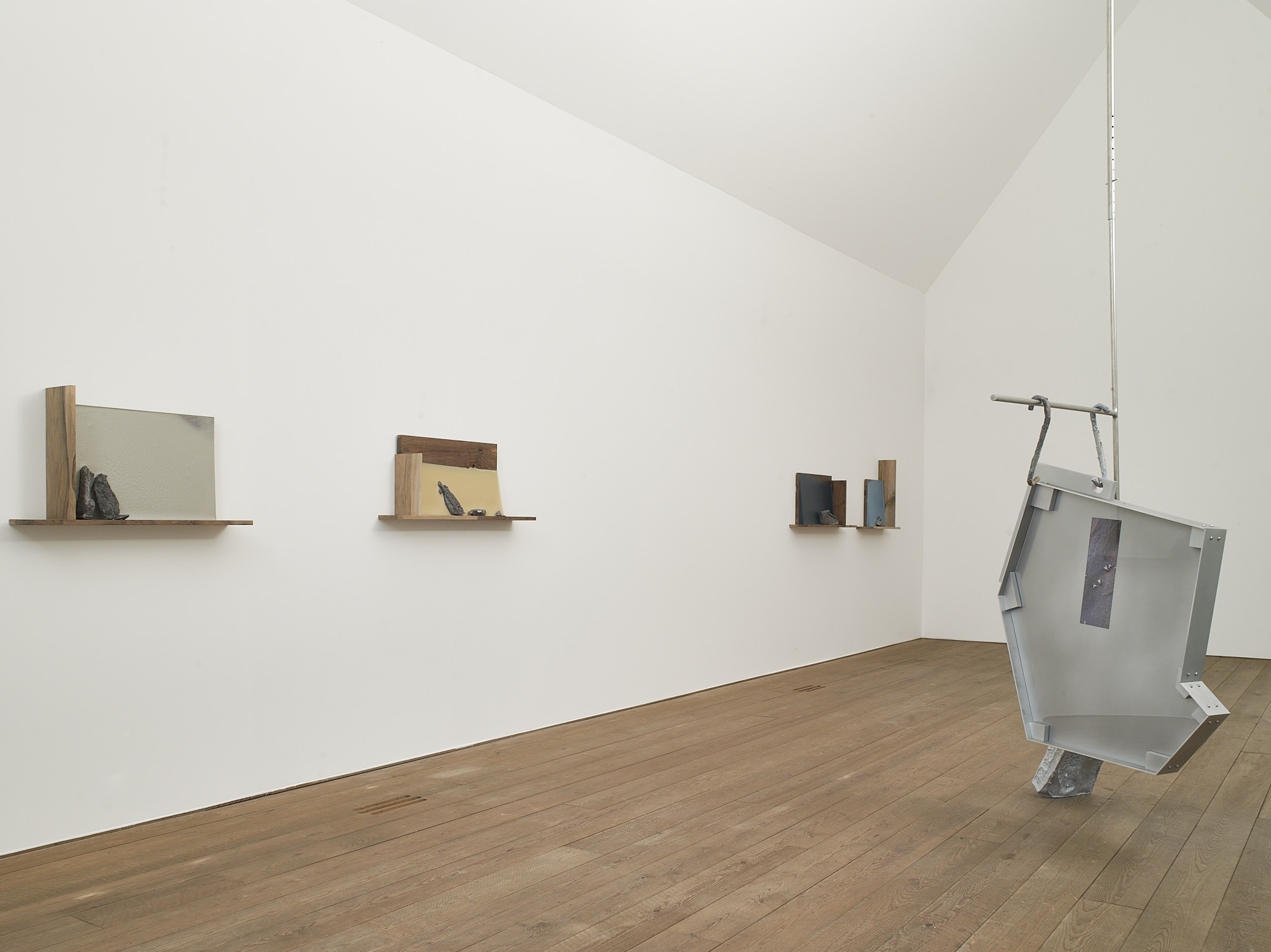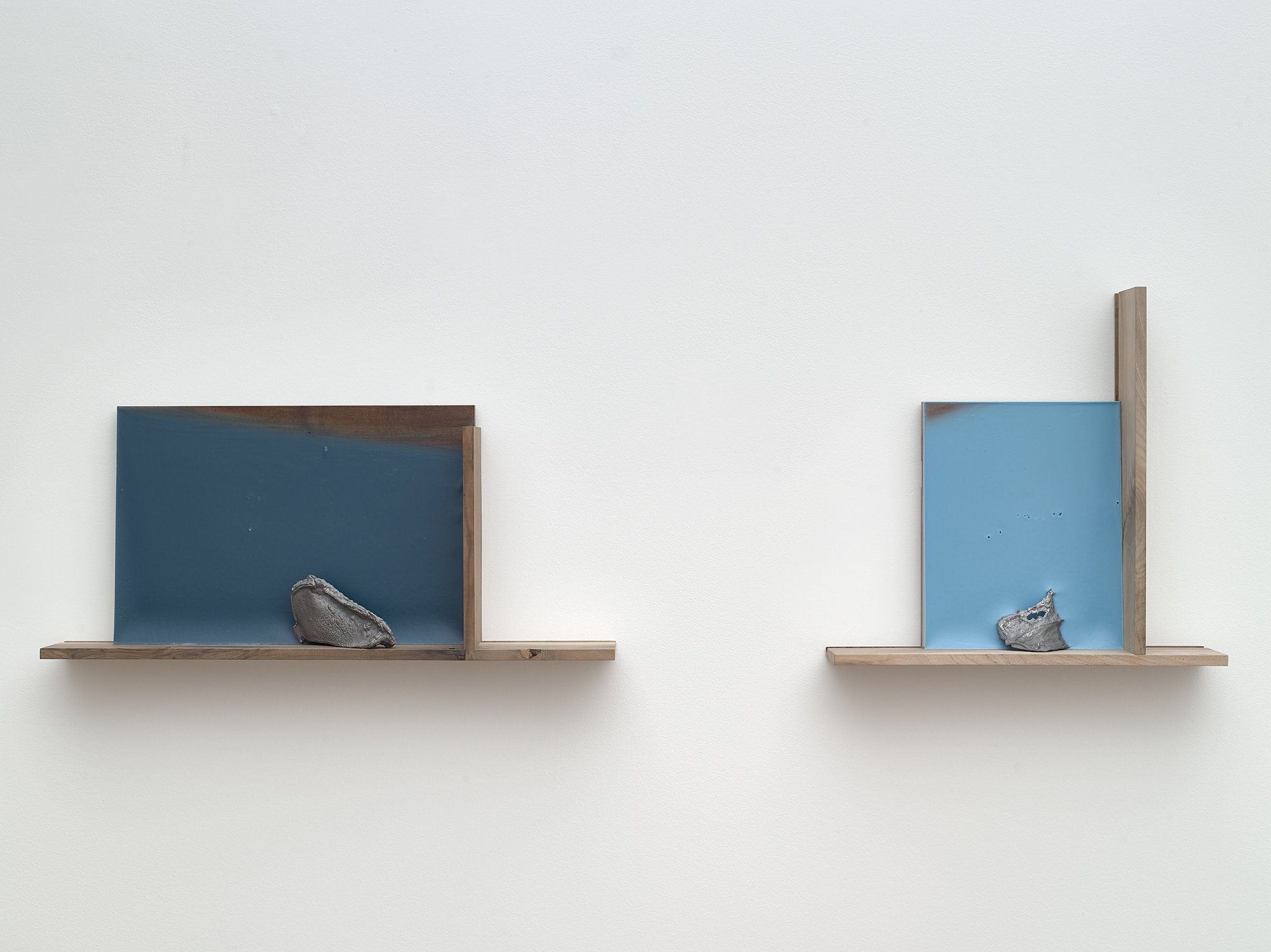NAIRY BAGHRAMIAN
S’ÉLOIGNANT
October 22, 2023 – Januari 27, 2024
Open: Friday & Saturday from 2- 6p.m. or by appointment.
Closed on November 11.
Closed from December 29, 2023 to January 6, 2024
De 11 Lijnen is pleased to present S’ éloignant, a solo exhibition by Nairy Baghramian.
Baghramian’s work comprises sculpture and installation, often in reference to architecture and the human body. Her work addresses temporal, spatial, and social relationships to language, history, and the present, with forms that materialize in response to contextual conditions or the premises of a given medium. These structures offer the possibility of an open and discursive dialogue in response to a site, or a freeing of the assigned relationship between an object and its meaning.
Throughout a career spanning over two decades, Nairy Baghramian skilfully explores the boundaries between space, form, and material. Her daring and incisive sculptural works invite reflection on the dynamics of human relationships and the complexity of social structures. Through a wide range of materials and techniques, Baghramian challengestraditional sculptural conventions, creating works that defy definitions and reveal new perspectives. Her work can be described as abstract, although it is an abstraction of reality, and specifically the human body, whose forms it consistently evokes.
‘Ambivalent abstraction’ might be a better way to describe my work. – Nairy Baghramian
In this exhibition, Baghramian explores 4 different themes of her work.
S’ éloignant: Cast lead, wax and walnut.
The Withdrawing reliefs could seem responsive, reactive-prompted to pull back. In the early months of the Covid-19 pandemic, Nairy Baghramian expressed frustration with isolationist language of “social distancing” as opposed to a community-oriented phrasing like “careful closeness”. Bagramian’s work emerges from the understanding that we are “always…inside something else” of the body, too. Withdrawing as ideally, wishfully selfprotective: establishing or re-establishing a boundary; pursuing privacy in public; locating some deeper interiority at the very edges.
Working from their edges inward, each is elegantly legible in its parts. A pair of richly grained walnut boards fitted together to form a sheltering corner; a nearsquare backing board, also of walnut but coated with an opaque layer of wax; a rough hand- or first- sized lump of darkling lead set into the wax, more and less immersed, while also low enough to garner secondary support, as needed, from the horizontal length of wood. A reference is made to the intimacy and colours of the Flemish Primitives.
Coude à Coude: Cast aluminium and wax.
An aluminium structure, not shiny and new, but handled, worked, encases two large slabs of wax. Wax, commonly used in the casting process, has not vanished here as usual, but the two forms sit “side by side” as the title suggests, proudly dominating the piece.
Baghramian tackles binaries head on: private/public; interior/exterior; industrial/organic; process/production; feminine/masculine; darkness/humour; soft/hard; and so on. The materials she uses for Coude à Coude such as the wax and aluminium, have a symbiotic relationship within the production process. A codependence that begins in production, develops into the opposing forces at play in the work, and culminates in the way in which they interact with their surroundings and their audience. Baghramian’s sculptures throw down a challenge to their settings, and disrupt our expectations. Turning to the artist for the last word, in a talk given in 2012 at the Vera List Center in New York, Baghramian argued that “In its encounter with the beholder, the work of art exercises an indirect influence on cultural habits, drawing our attention by contradicting or rejecting them, and thus providing a frame for the transformative power of aesthetics and politics.”
The sculpture in marble ‘Knee & Elbow & Ankle’, 2023
is referring to a work of Picasso, ‘La Dormeuse’, and is exploring the parts of the body. By singling them out, the joints are liberated from their function and rendered as abstract entities, void of any physical burden.
S’accrochant (taupe) & (bleu horizon): Casted aluminium, aluminium, stainless steel, painted steel, C-print
Marking the occasion of the awarding of the 2022 Nasher Prize to Nairy Baghramian, ‘Modèle vivant’ presents her body of work in conversation with pieces from the Nasher’s permanent collection that evoke largely female figures and live models.
Baghramian’s sculptures in ‘Modèle vivant’ are monochromatic except for the colored C-prints – depicting clusters of flies on unidentified animal skins – that are adhered to the polished-metal slices of each of her dangling sculptures, and the steel hooks from which they’re suspended, which are covered with congealing paint. These details can’t help but conjure the image of animal carcasses hanging in a butcher’s shop.
The image of the traumatized body is evoked again by the exchange between Baghramian’s work and Isamu Noguchi’s Gregory (Effigy) (1945, cast 1969). In Noguchi’s sculpture, an oblong plane of bronze is punctured and sliced by six hooks, three of which act as supporting ‘limbs’ that connect with the ground. This interlocking work was created after World War II, during which Noguchi was voluntarily incarcerated in an internment camp in Poston, Arizona. Conceived during a period of disillusionment, Gregory (Effigy) speaks to the isolation that Noguchi experienced in the face of racist political agendas, but also of the mundane cruelty of capitalism. It borrows its name from the protagonist of Franz Kafka’s The Metamorphosis (1915), Gregor Samsa, who wakes up one morning to find himself inexplicably transformed into a giant insect. Though he briefly questions this cataclysmic event, Samsa is soon consumed by the banal: worries about his ability to perform his job and provide for his family.
Not dissimilarly, Baghramian’s work arrives in the wake of COVID-19, another catastrophic world event, which has laid bare the prioritization of revenue and profits over human lives. It was, after all, the most vulnerable who were anointed ‘essential workers’ for keeping grocery stores and restaurants open during quarantine, earning the minimum wage and without guaranteed healthcare. Baghramian shows overburdened bodies – a reminder that none of us are as invulnerable as we may believe.
Text references by Paulina Pobocha (Associate curator MoMA, NY) – Dr. Catherine Craft (Curator NASHER SCULPTURE CENTER) – Stella Bottai (ASPEN ART MUSEUM, Artchrush) – Harley Wong (Exhibition Reveiws, US Reveiws – 20 DEC 22).
Biography
Nairy Baghramian (°1971, Isfahan, Iran), is a visual artist living and working in Berlin, Germany since 1984.
Ongoing exhibitions: YOU ARE HERE* Contemporary Art in the Garden, MoMA, NY and Scratching the Back, The Metropolitan Museum of Art, NY.
Recent solo shows include those at Aspen Art Museum, Aspen, Colorado (2023), Carré d’Art, Nîmes, France (2022); Nasher Sculpture Center, Dallas, Texas (2022); Galleria d’Arte Moderna (GAM), Milan, Italy (2021); MUDAM Luxembourg, Luxembourg (2019); Palacio de Cristal, Madrid, Spain (2018); the Walker Art Center, Minneapolis (2017); Statens Museum for Kunst, National Gallery of Denmark, Copenhagen (2017); Museum of Contemporary Art, Ghent, Belgium (2016); Museum Haus Konstruktiv, Zurich, Switzerland (2016); Museo Tamayo, Mexico City, Mexico (2015); Serralves Museum, Porto, Portugal (2014); MIT Visual Arts Center, Cambridge, Massachusetts (2013); Kunsthalle Mannheim, Germany (2012); the Contemporary Art Gallery, Vancouver, Canada (2012); and Serpentine Gallery, London, UK (2010).
She has participated in the Yorkshire Sculpture International at The Hepworth Wakefield, UK (2019); Venice Biennale, Italy (2019 and 2011); Skulptur Projekte Munster, Germany (2017 and 2007); the 8th and 5th Berlin Biennale, Germany (2014 and 2008); and Glasgow International Festival of Visual Art, Scotland (2012).
Baghramian has been the recipient of numerous awards including the Aspen Award for Art (2023); the Nivola Award for Sculpture (2023); the Nasher Prize Laureate (2022); the Zurich Art Prize (2016); the Arnold-Bode Prize, Kassel (2014); the Hector Prize, Kunsthalle Mannheim (2012); and the Ernst Schering Foundation Award (2007).
A catalogue of the exhibition will be published.
